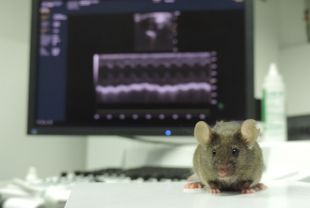Scientists from the University of Bonn in collaboration with colleagues from Radboud University, Nijmegen and the German Mouse Clinic showed, that Creld1, the first single gene linked to atrioventricular septal defects (AVSD) of newborn, regulates myocardial development and function in mice.
Missense mutations of CRELD1 (Cysteine-Rich with EGF-Like Domains 1) were found in non-syndromic and in Down syndrome patients with AVSD. AVSD is a common congenital heart malformation, which results from the failure of cardiac remodeling during the formation of the atrioventricular septa and valves. More than 7% of all recognized heart defects belongs to AVSD, and patients have to undergo surgical treatment in the first months after birth to prevent heart failure. Due to the embryonic lethality of global Creld1 knockout (KO) in mice, its cell type-specific function during peri- and postnatal stages is still unknown.
In this study the researchers generated conditional Creld1 KO mice lacking Creld1 either in the endocardium (KOTie2) or the myocardium (KOMyHC). The mutant mice underwent a cardiac phenotyping combined with biochemical, cellular and molecular examinations to find out the function of Creld1 in the myocardium and endocardium. It turned out, that Creld1 in the myocardium is essential for cardiac function and survival, the KOMyHC mutant mice died early postnatally due to myocardial hypoplasia. KOMyHC embryos showed phenotypic differences compared to their control littermates: the cardiac wall failed to mature properly with trabeculae being morphologically distinct and not yet compacting. Furthermore, E13.5 KOMyHC embryos presented with an intra-ventricular shunt (IVS), whereas ventricles were already fully septated in wild-type littermates, indicating a delayed septation. The cardiac defects leading to postnatal death are already initiated during embryonic development. Further analyses demonstrate that lack of myocardial Creld1 causes extracellular matrix remodeling and trabeculation defects, resulting in myocardial hypoplasia and, eventually, heart failure. Transcriptome and flow cytometry analyses revealed that Creld1 controls Notch1 signaling in the heart during embryonic development by modulation of the Notch1 signaling pathway, also transcriptional networks in both atria and ventricles at P3 were affected. In contrast to that, Creld1 function in the endocardium was shown to be dispensable for heart development. Mice were viable, the heart fully developed and the heart function measured by electrocardiography and echocardiography was unaltered.
These results uncover the previously undescribed function for CRELD1 signaling and demonstrate that CRELD1 and NOTCH1 signaling are closely intertwined in the myocardium during heart development. AVSD patients carrying CRELD1 mutations globally express the mutation in both endocardium and myocardium, and the patients display a defect in septum and valve formation due to defects in AVC formation. There have been no defects in chamber maturation reported, which would be a result of CRELD1 loss-of-function in the myocardium. To mimic the human pathophysiology and further analyze the functional consequences of CRELD1 mutations in vivo, the next step would be to investigate knock-in mouse models carrying human mutations that express the mutant protein in cell type-specific manner.
Beckert V, Rassmann S, Kayvanjoo AH, Klausen C, Bonaguro L, Botermann DS, Krause M, Moreth K, Spielmann N, da Silva-Buttkus P, Fuchs H, Gailus-Durner V, Hrabe de Angelis M, Händler K, Ulas T, Aschenbrenner AC, Mass E, Wachten D. Creld1 regulates myocardial development and function. J Mol Cell Cardiol. 2021 Mar 24;156:45-56


